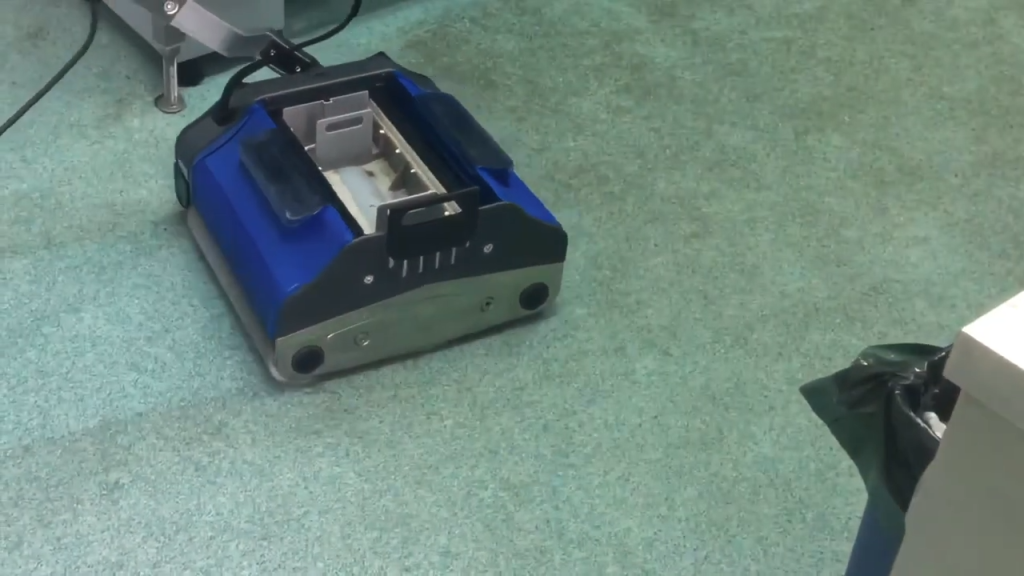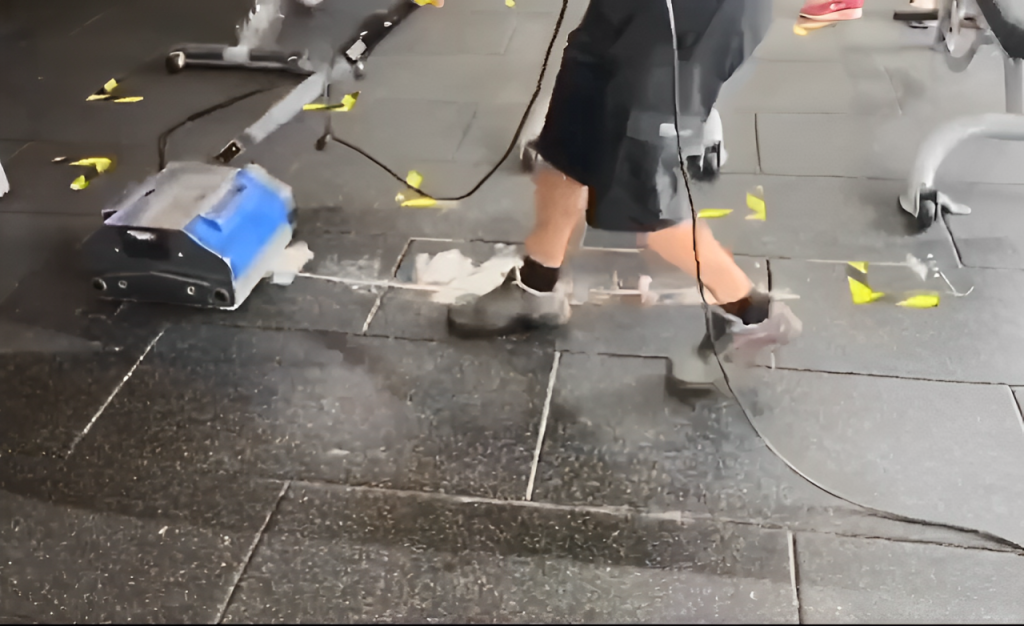Imagine this: you’re responsible for maintaining a spotless floor in a bustling commercial space, yet you find yourself grappling with the endless options of cleaning machines. It’s not just about picking any machine; it’s about choosing a commercial floor cleaning machine for contact cleaner that meets your needs without breaking the bank or cutting into your precious time. The challenge lies in finding that perfect balance between efficiency, cost, and performance—a puzzle that many facility managers face.
In today’s rapidly evolving market, the choices can be overwhelming. With advancements in technology, floor cleaning machines now boast features and functions that were once unimaginable.
But before you dive into the world of scrubbers, polishers, and vacuums, it’s essential to understand what will truly serve your specific requirements. Whether you’re dealing with stubborn grease stains in a kitchen or maintaining the sheen on a showroom floor, the right machine can change the game, transforming cleaning from a daunting task into a streamlined process.
Understanding Your Cleaning Needs
Every cleaning challenge begins with a clear grasp of what your floors endure daily. Factors such as foot traffic, spill frequency, surface type and layout complexity all influence which cleaning solution is most appropriate.

High-traffic corridors in retail spaces may demand a robust, manoeuvrable machine capable of continuous operation, whereas back-of-house kitchens could require units designed to tackle oil and food debris effectively. By mapping out your cleaning zone, you can narrow down whether you need a compact scrubber for tight corners or a ride-on machine for extensive areas.
Equally important is recognising any unique constraints in your environment. For instance, noise restrictions in hospitals or schools might steer you towards quieter electric models over petrol-powered alternatives. Similarly, storage space and wheel access in multi-floor complexes may impact machine size and portability choices. When you align these practical considerations with your cleaning objectives, selecting the ideal floor cleaning machine for contact cleaner becomes less daunting—ensuring you invest in equipment that aligns perfectly with your premises’ operational flow.
Types of Floor Cleaning Machines
Floor cleaning machines come in various forms, each tailored to different tasks and environments. The most common categories include scrubber-driers, rotary floor machines, steam cleaners and sweepers. Scrubber-driers combine scrubbing and suction to leave floors dry and hygienic in a single pass, making them ideal for large warehouses or shopping centres. Rotary machines, often called “buffers,” use high-speed rotating pads to polish or strip floors—great for gyms and hotel lobbies requiring a glossy finish.

Sweepers excel at picking up dust, dirt and debris before scrubbing, which is useful in manufacturing plants or construction sites. Meanwhile, steam cleaners leverage high-temperature vapour to sanitise without chemicals, perfect for environments with stringent hygiene standards. By comparing these machine types against your facility’s layout and cleaning priorities, you can identify which style or hybrid unit offers the best performance and versatility for your setting.
Considerations for Contact Cleaner Use
Integrating a contact cleaner into your floor cleaning routine introduces additional factors to weigh. Contact cleaners—specialised solutions designed to remove tar, gum or adhesives—must be compatible with your machine’s materials and recovery system. Using a chemical unsuitable for your machine’s seals or tanks can cause premature wear or even damage internal components, so always consult manufacturer guidelines before introducing new agents.
Furthermore, concentrate on dilution ratios and dwell times. Some contact cleaners require longer application periods to break down stubborn residues, while others work best when applied directly with minimal water. Ensuring your machine can accurately dispense and mix the cleaning solution will help you achieve consistent results without wasting product. Also, confirm that waste water disposal protocols in your facility accommodate the type and strength of the cleaning agent used.
Performance vs. Cost: Striking the Right Balance
When considering a floor cleaning machine for contact cleaner use, cost is only one side of the equation. Entry-level machines may appeal to tight budgets but can lack the durability or advanced features necessary for demanding environments. Conversely, premium models often come with steep price tags yet deliver superior performance, quieter operation and lower long-term maintenance expenses. Calculate total cost of ownership (TCO), factoring in purchase price, energy consumption, consumables, upkeep and expected lifespan to see beyond the sticker shock.

Return on investment (ROI) also hinges on productivity gains. A slightly more expensive machine that cleans faster, holds larger solution tanks and reduces manual labour can pay for itself within months through labour savings and less downtime. Investigate warranty terms, service support and parts availability in Australia; a dependable local service network can prevent costly delays when repairs become necessary. By balancing initial expenditure against long-term benefits and convenience, you’ll arrive at a financially sound decision tailored to your operational demands.
Features to Look for in a Commercial Floor Cleaning Machine
Modern floor cleaning machines boast an array of features designed to enhance efficiency and ease of use. Key options to prioritise include adjustable cleaning pressure, which enables you to tweak scrubbing intensity for delicate or heavily soiled surfaces. Brush or pad speed variability also plays a role in performance, allowing for quicker passes on robust floors and gentler action on softer materials. These controls ensure versatility across different areas of your site without swapping equipment.
Other essential features include ergonomic design elements—such as padded handles, intuitive control panels and easy-glide wheels—that reduce operator fatigue and training time. Sight-level solution and recovery tank indicators help staff monitor fill levels at a glance, preventing machine overflows and interruptions. Some advanced models now offer on-board chargers, allowing for battery top-ups between shifts and maximising uptime. By selecting machines equipped with the right combination of these features, you’ll streamline cleaning routines and support cleaner, safer floors.
Maintenance Tips for Prolonging Machine Lifespan
Regular maintenance is vital to keep your floor cleaning machine for contact cleaner use performing optimally and avoid costly breakdowns. Begin with a daily rinse of solution and recovery tanks to prevent chemical residues from corroding internal components. Inspect brushes or pads after each shift, replacing worn elements to maintain cleaning efficacy. Likewise, clear squeegee blades and suction hoses of debris to ensure crisp water pick-up and prevent motor strain.
On a weekly or monthly basis, check battery fluid levels if applicable, tighten loose fittings, and lubricate moving parts per the manufacturer’s schedule. Keep an eye on filter cleanliness; clogged filters reduce airflow and may lead to overheating. Finally, establish a logbook to record service tasks and any repairs. Having a documented maintenance history not only facilitates warranty claims but also highlights recurring issues, enabling you to address root causes before they escalate into major faults.
Training and Safety Practices for Machine Operators
Even the most advanced floor cleaning machine is only as effective as its operator. Proper training ensures staff understand machine controls, cleaning protocols and emergency shutdown procedures. Start with manufacturer-provided manuals and instructional videos, then supplement with hands-on demonstrations. Emphasise the correct mixing of contact cleaner solutions, safe handling of chemicals and guidelines for entering and exiting confined spaces, if relevant in your facility.
Safety signage, protective gloves, eye protection and non-slip footwear should be mandatory when operating machines with strong cleaning agents or heavy components. Train operators to perform pre-shift inspections, spotting potential hazards like frayed cables or low tyre pressure. Also, outline safe storage practices: machines should be parked on level surfaces, batteries disconnected when servicing and cleaning agents locked away per Australian chemical regulations. A well-trained team not only safeguards equipment longevity but also reduces workplace incidents and fosters confidence in daily operations.
Evaluating Long-Term Benefits
Beyond immediate cleaning results, choosing the right floor cleaning machine influences your facility’s broader operational efficiency. Consistent, high-quality cleaning helps protect floor finishes, reducing the frequency of costly restorative treatments. It also supports health and safety objectives by minimising slip hazards and preventing the build-up of allergens or bacteria. Analyse cleaning performance metrics—such as square metres covered per hour, chemical consumption rates and downtime—to quantify improvements over manual or outdated methods.
Leverage these metrics when negotiating service contracts or budgeting for future upgrades. If a floor cleaning machine for contact cleaner exhibits a proven track record of reliability and measurable gains in productivity, it validates further investments in similar technology. Ultimately, a strategic focus on long-term benefits delivers a multiplier effect: lower operational costs, enhanced compliance and a more professional environment for both staff and visitors.
Conclusion: Making the Best Choice
Selecting an ideal floor cleaning machine for contact cleaner use requires a thorough assessment of your facility’s unique demands, budgetary constraints and desired performance outcomes. By understanding cleaning needs, comparing machine types and weighing features against costs, you equip yourself to make an informed decision that maximises efficiency and minimises total cost of ownership.
Invest in proper training, adhere to maintenance protocols and track long-term benefits to ensure sustained success. With the right strategy, your chosen machine will not only keep floors immaculate but also contribute to a safer, more productive environment—transforming everyday cleaning into a seamless component of your operational excellence.

